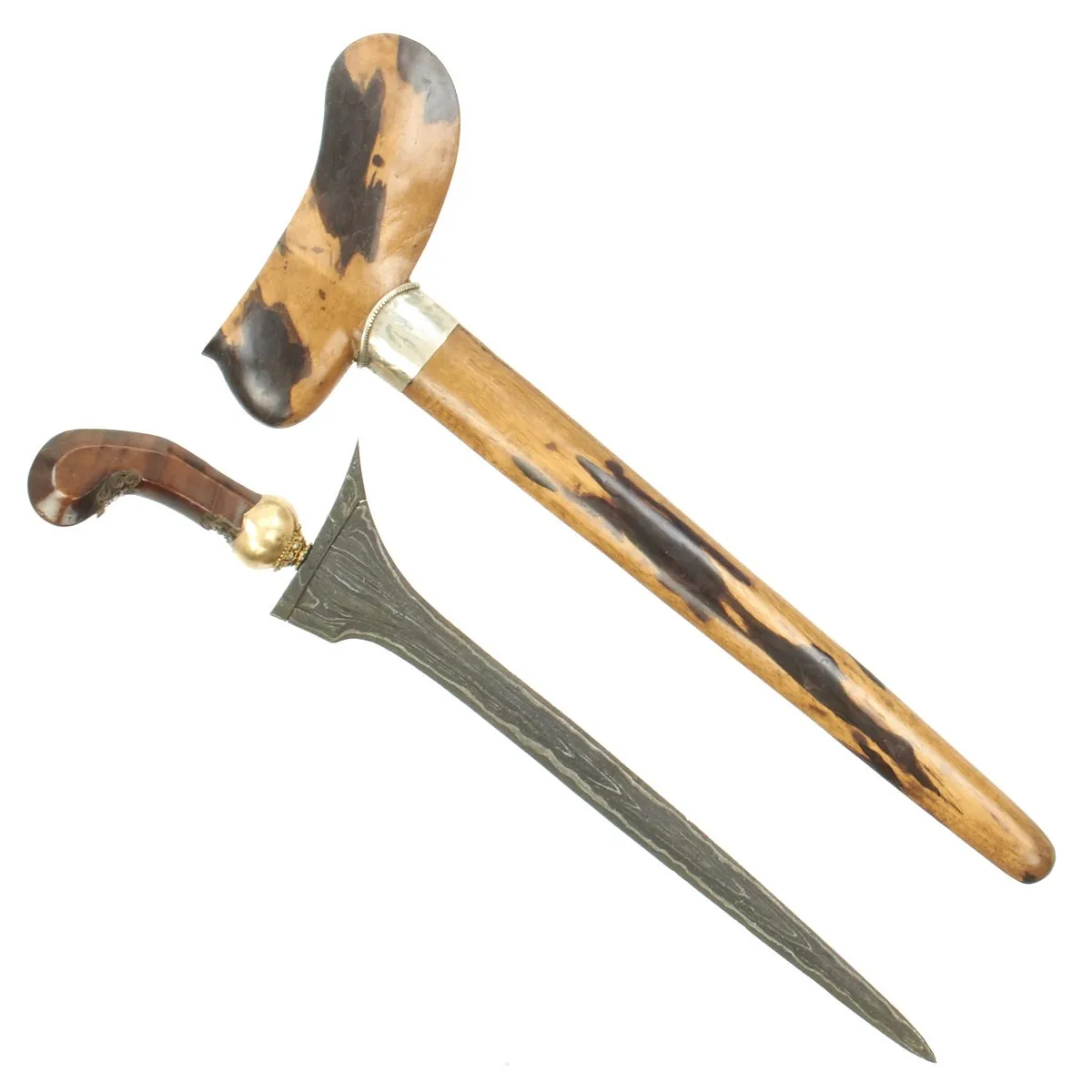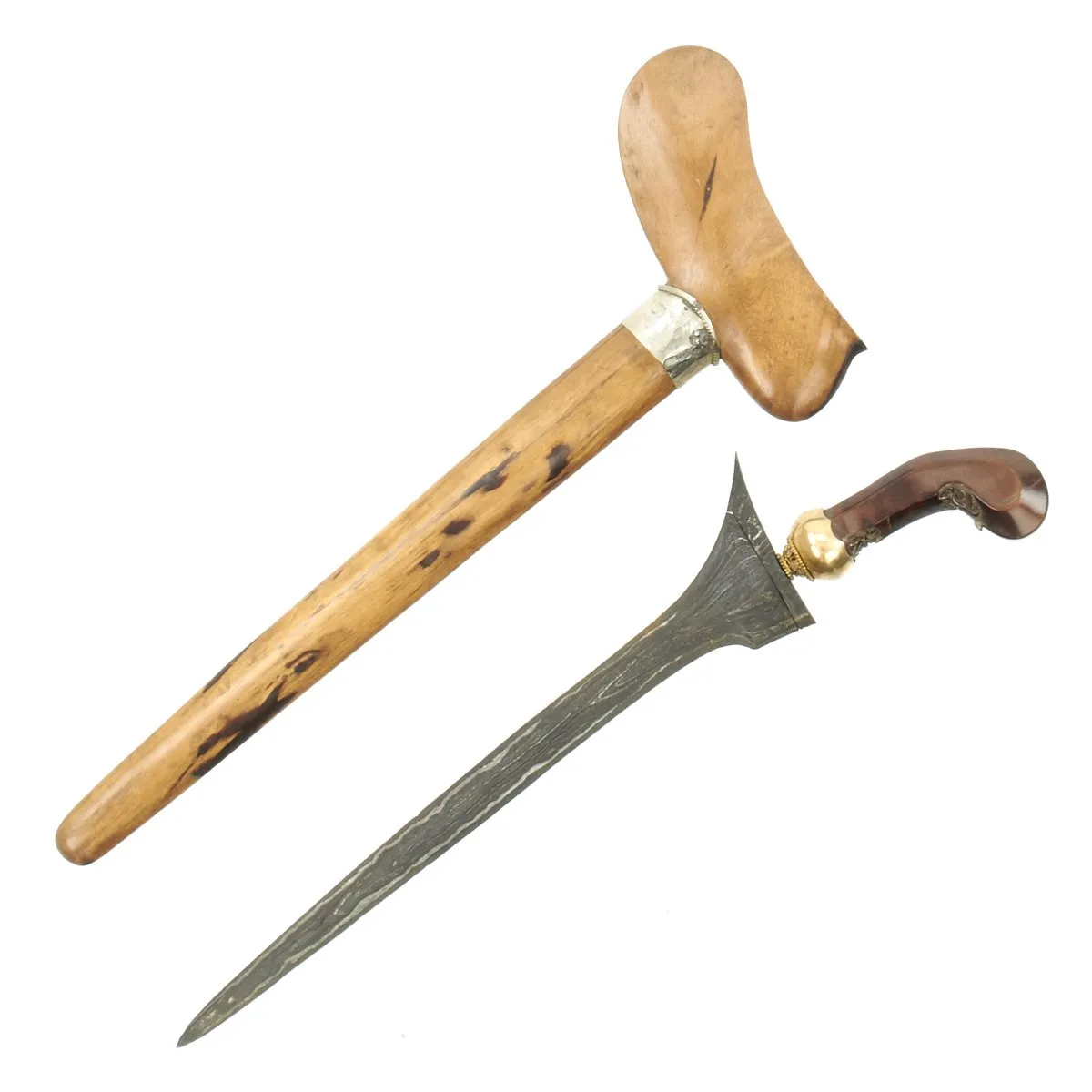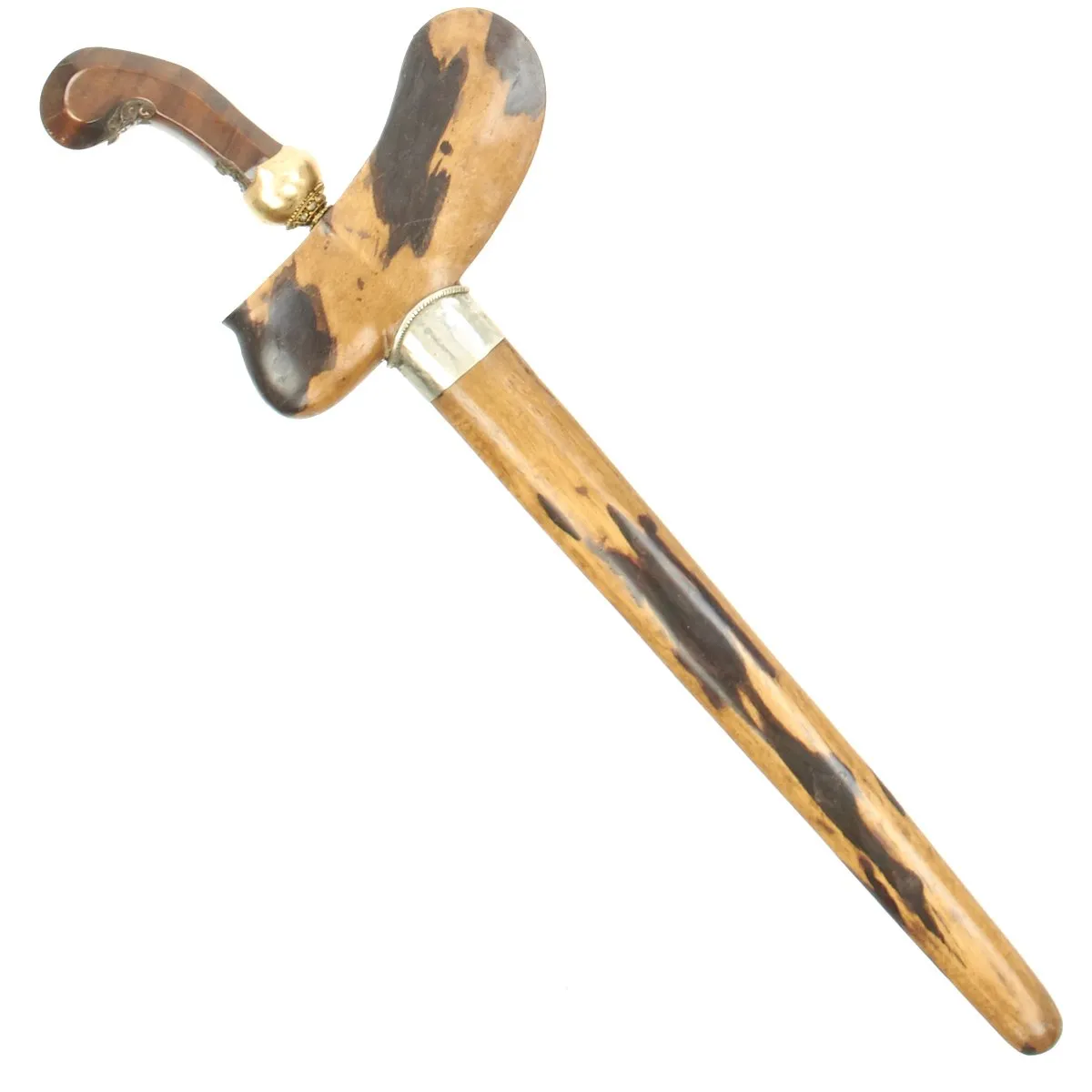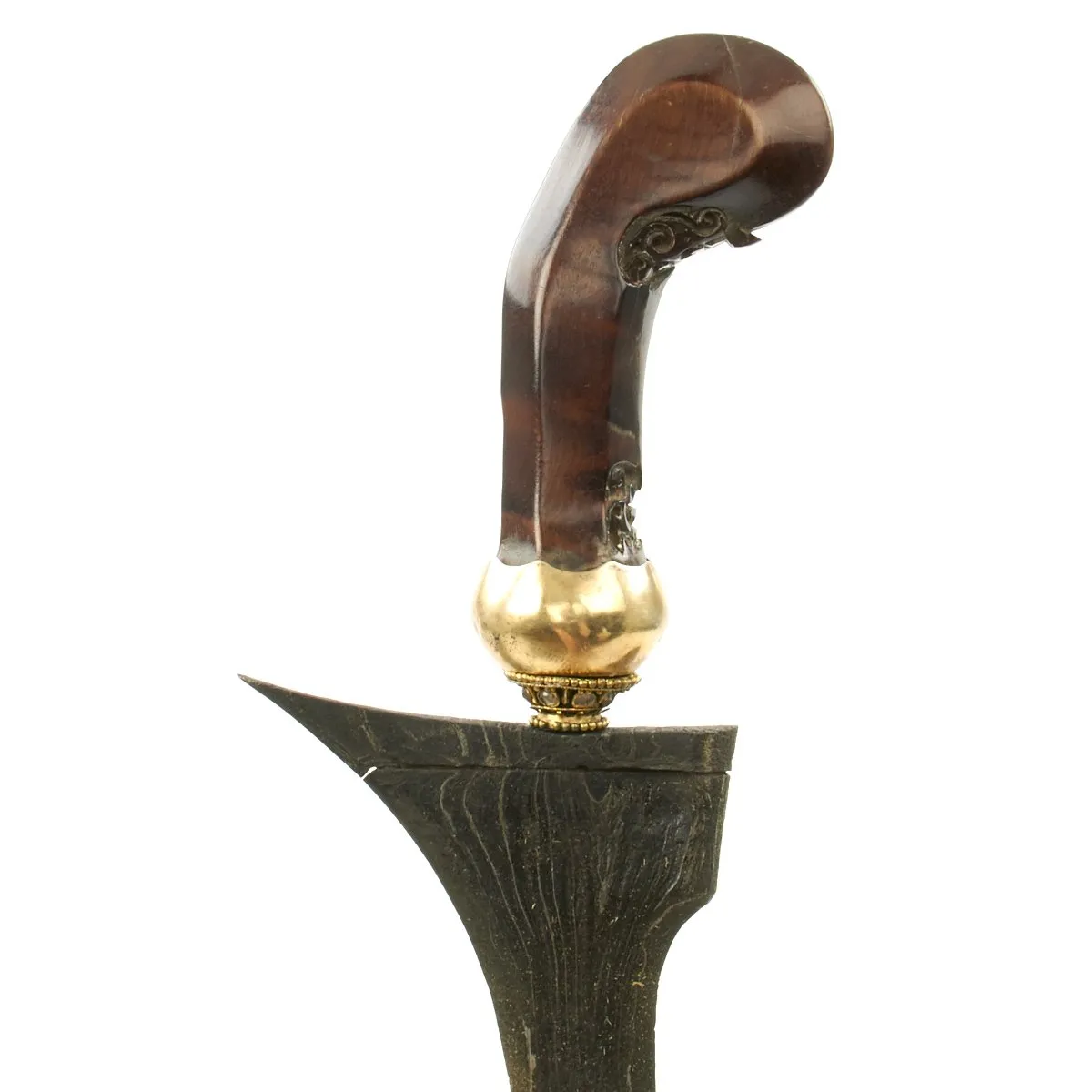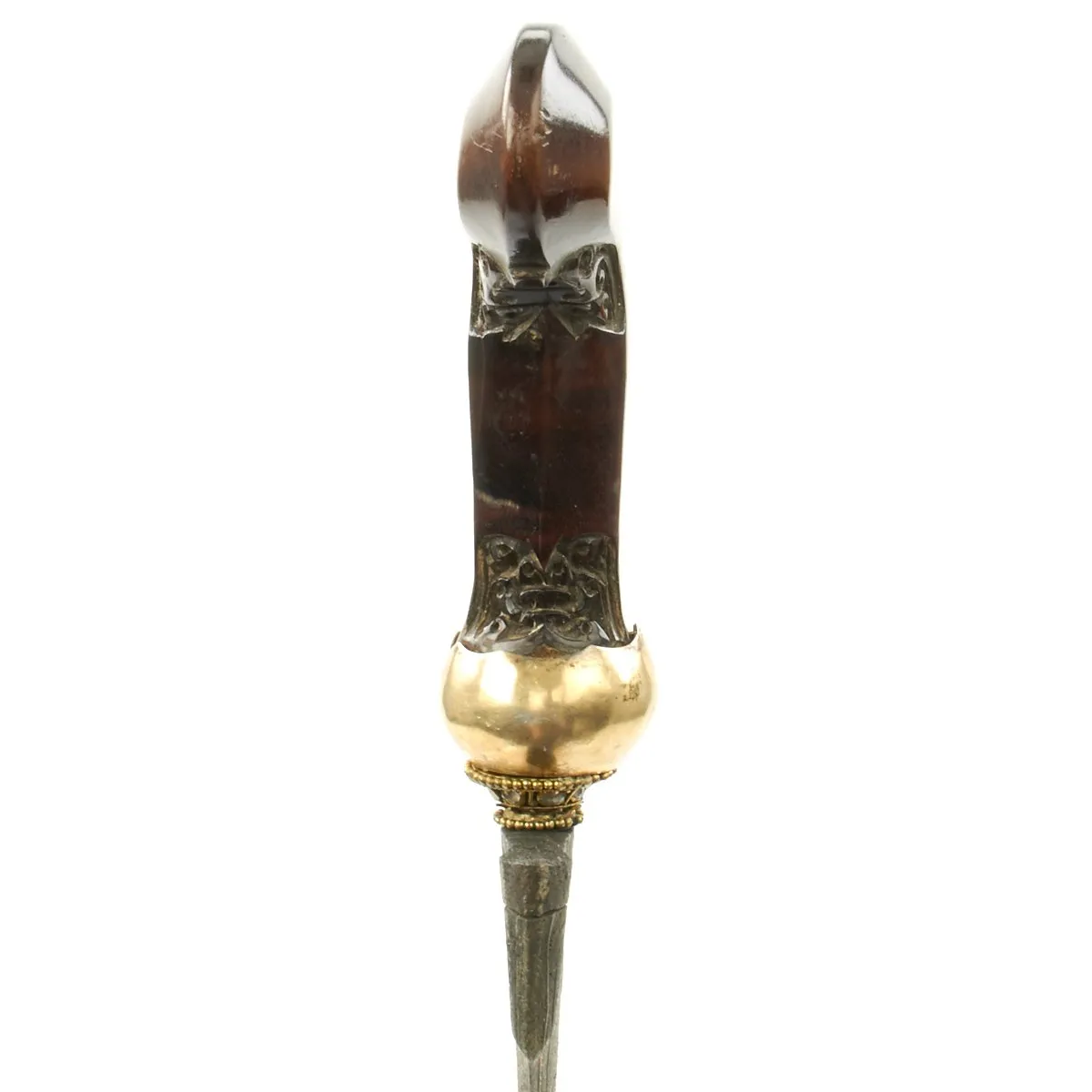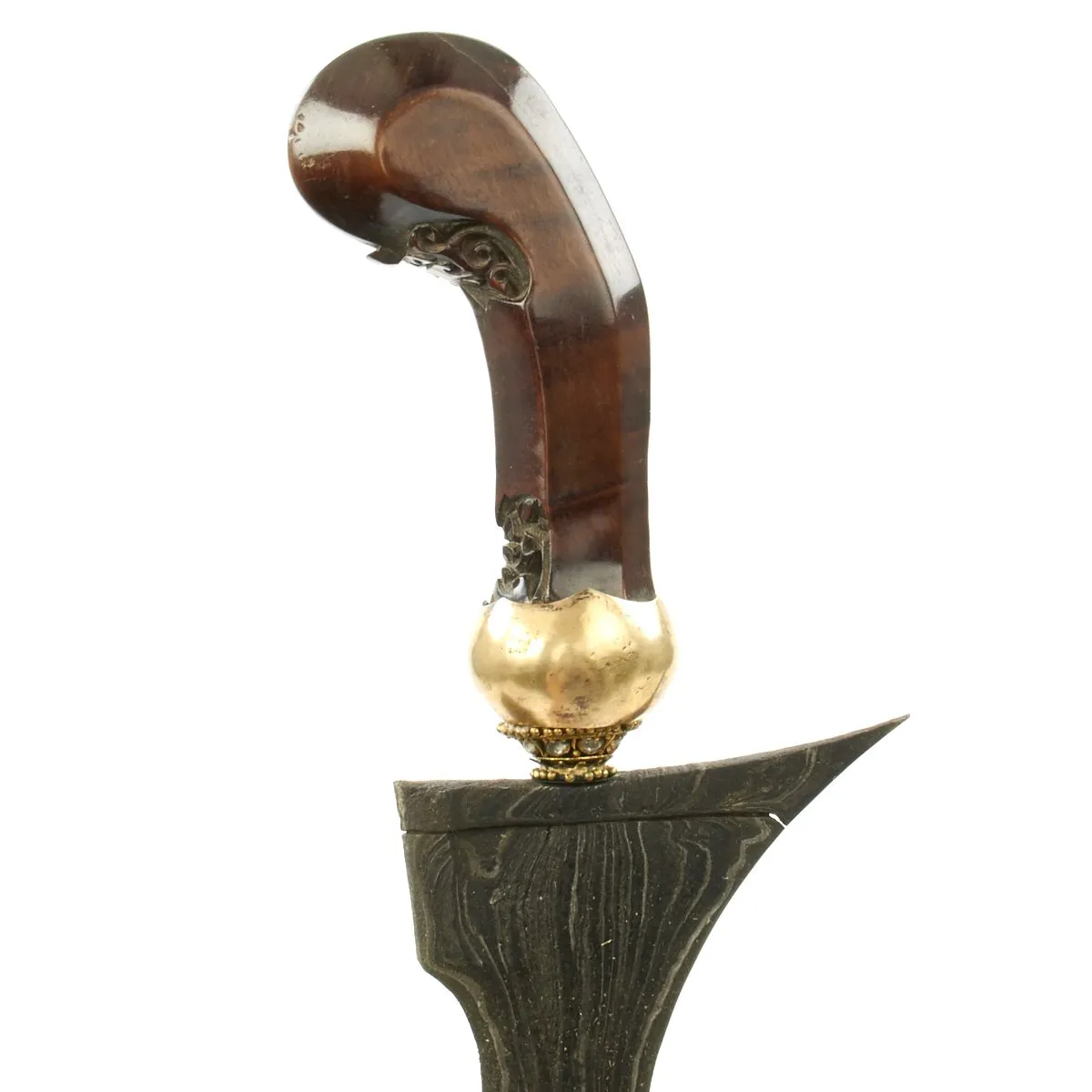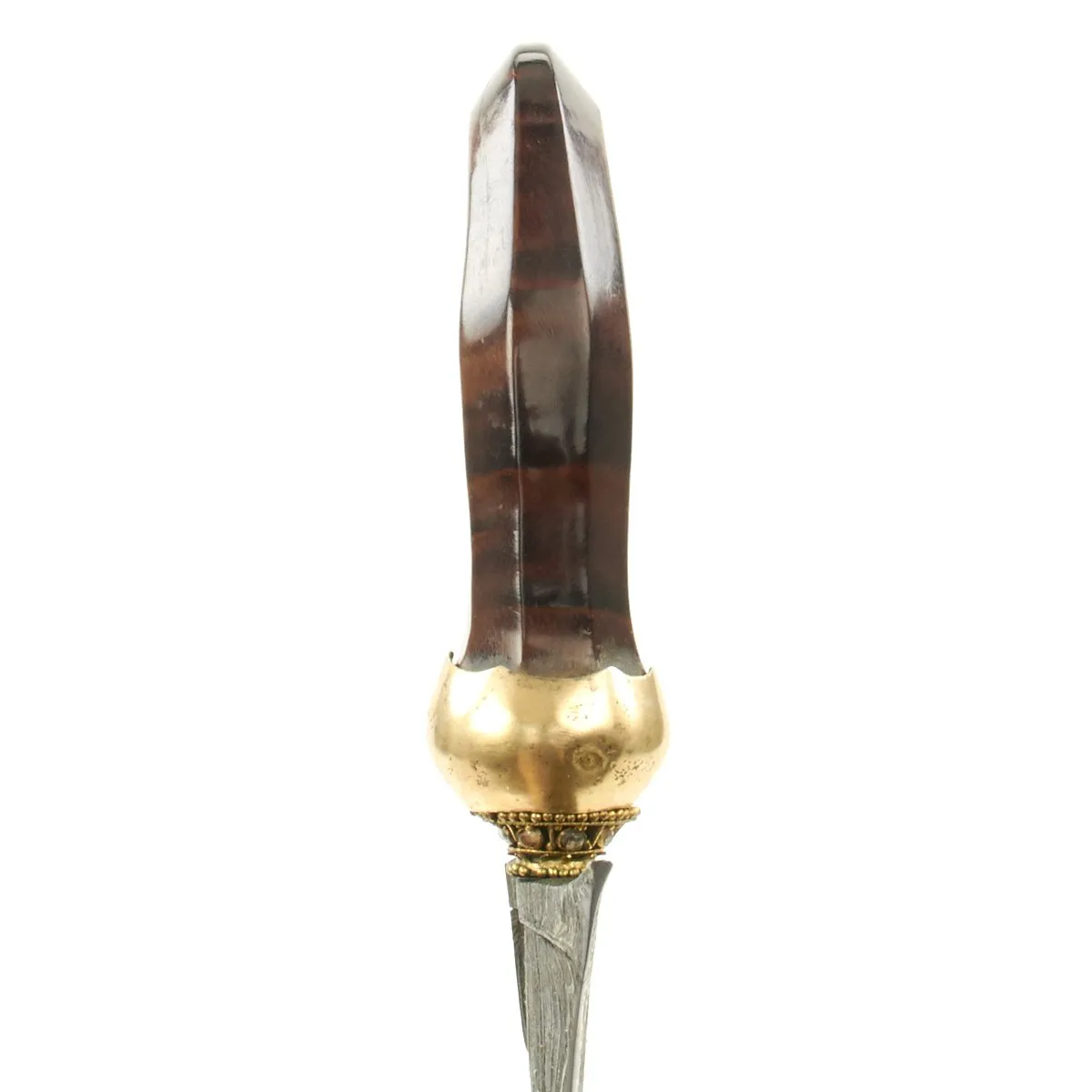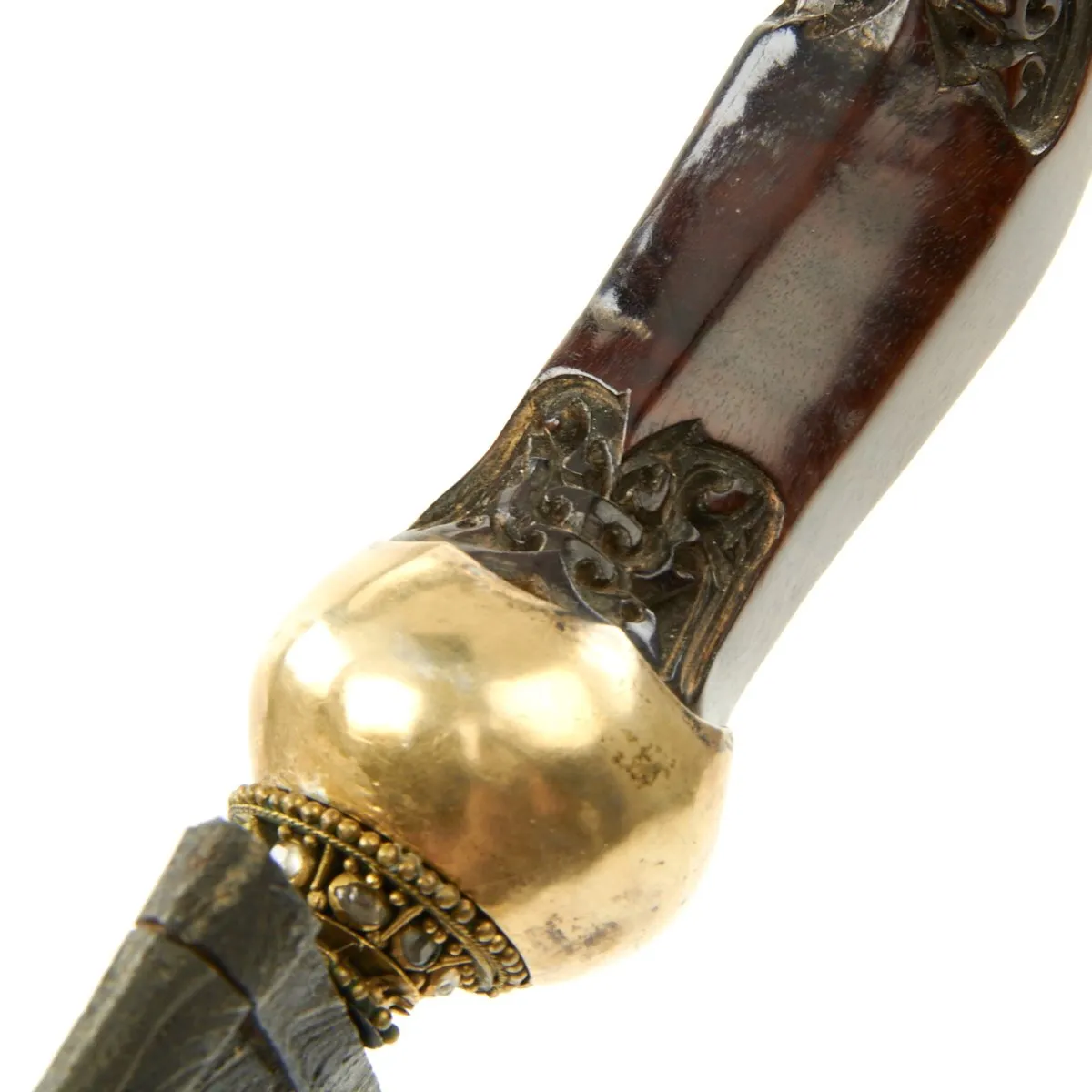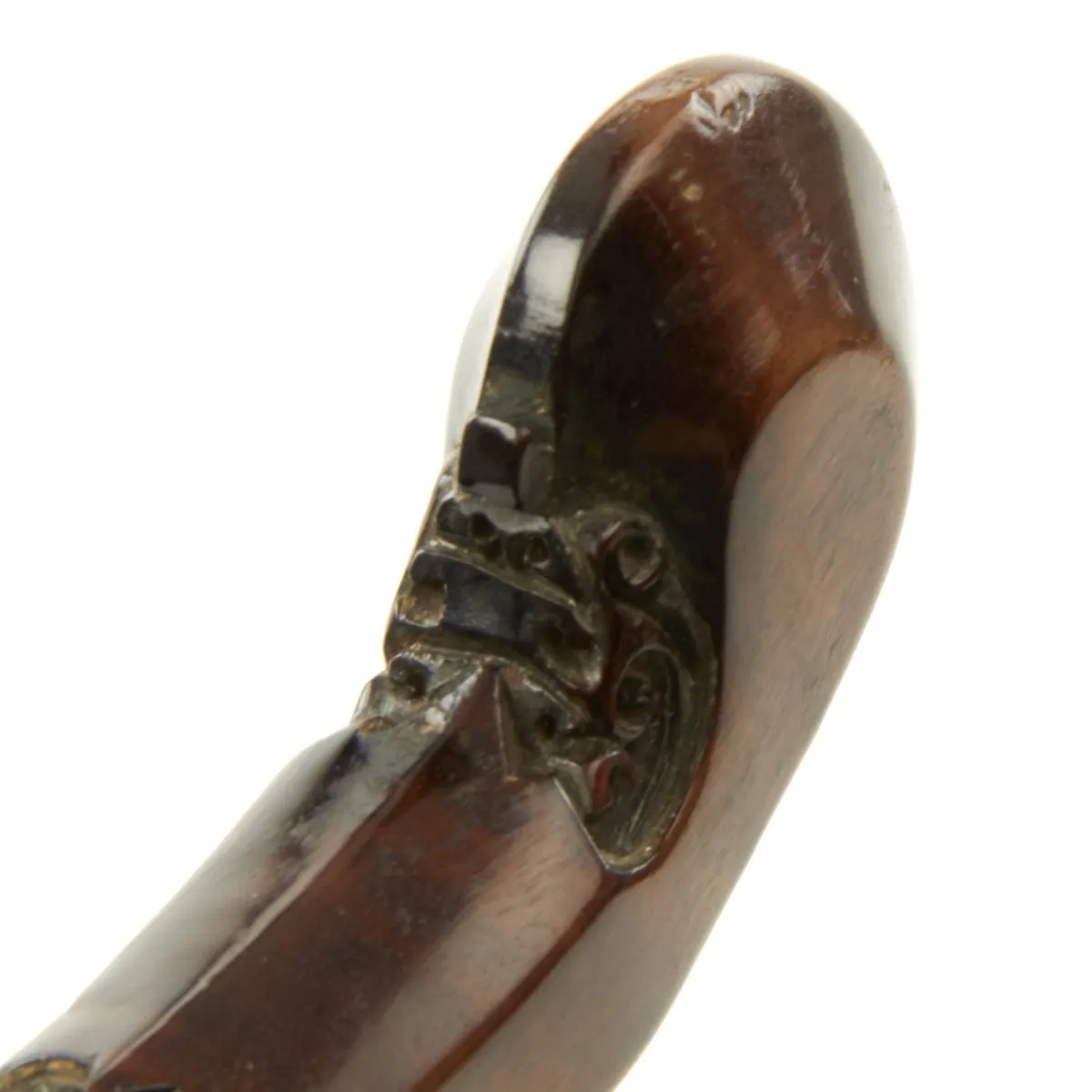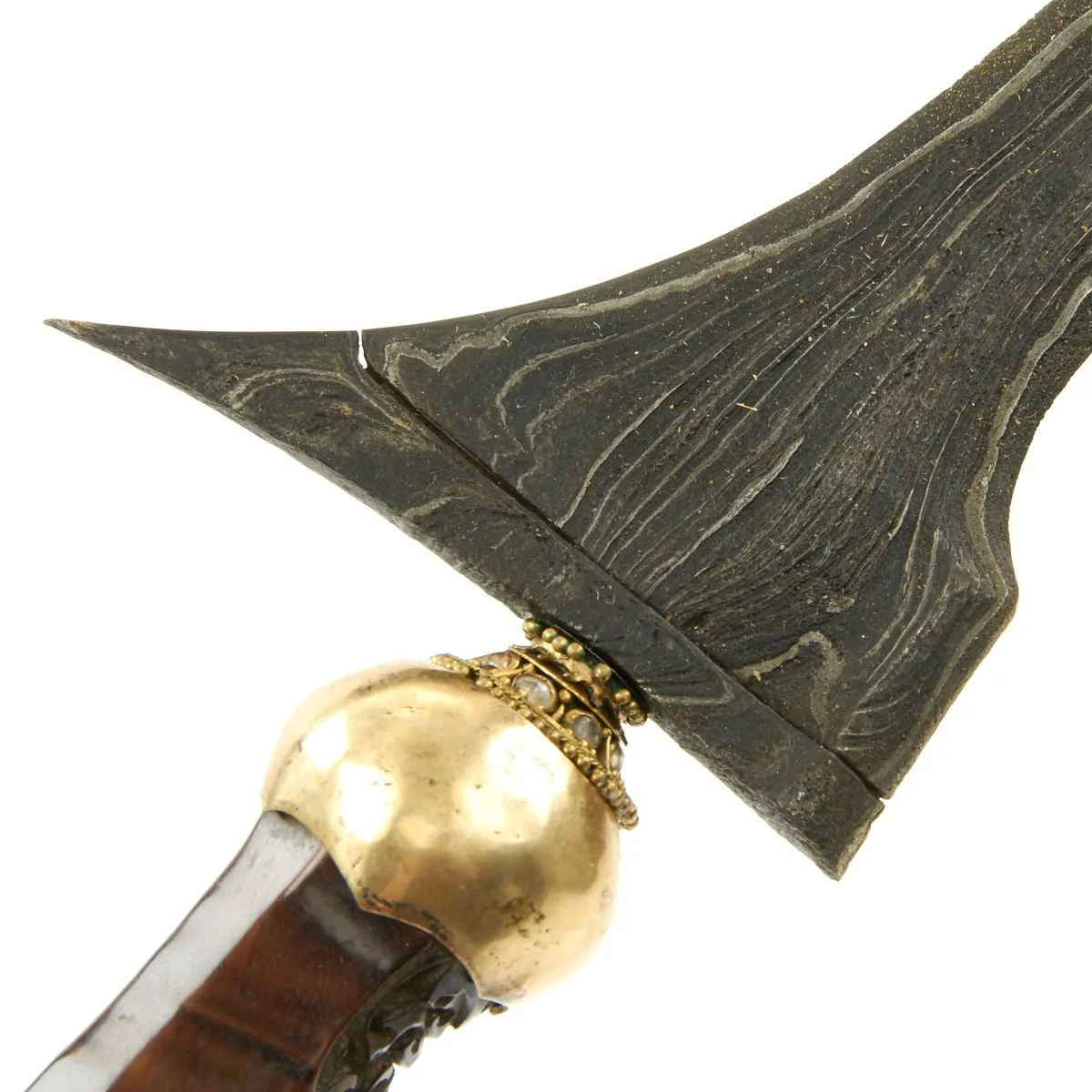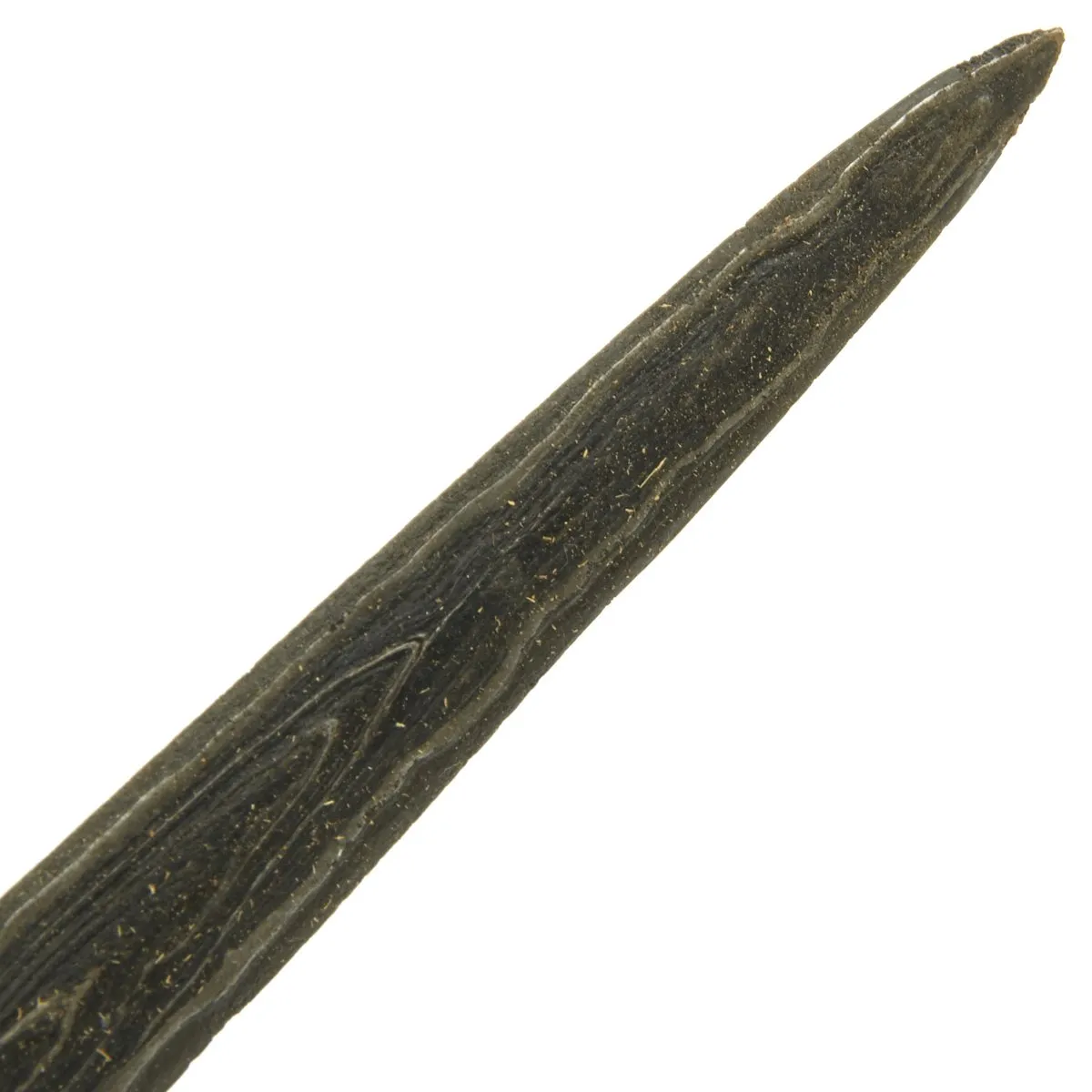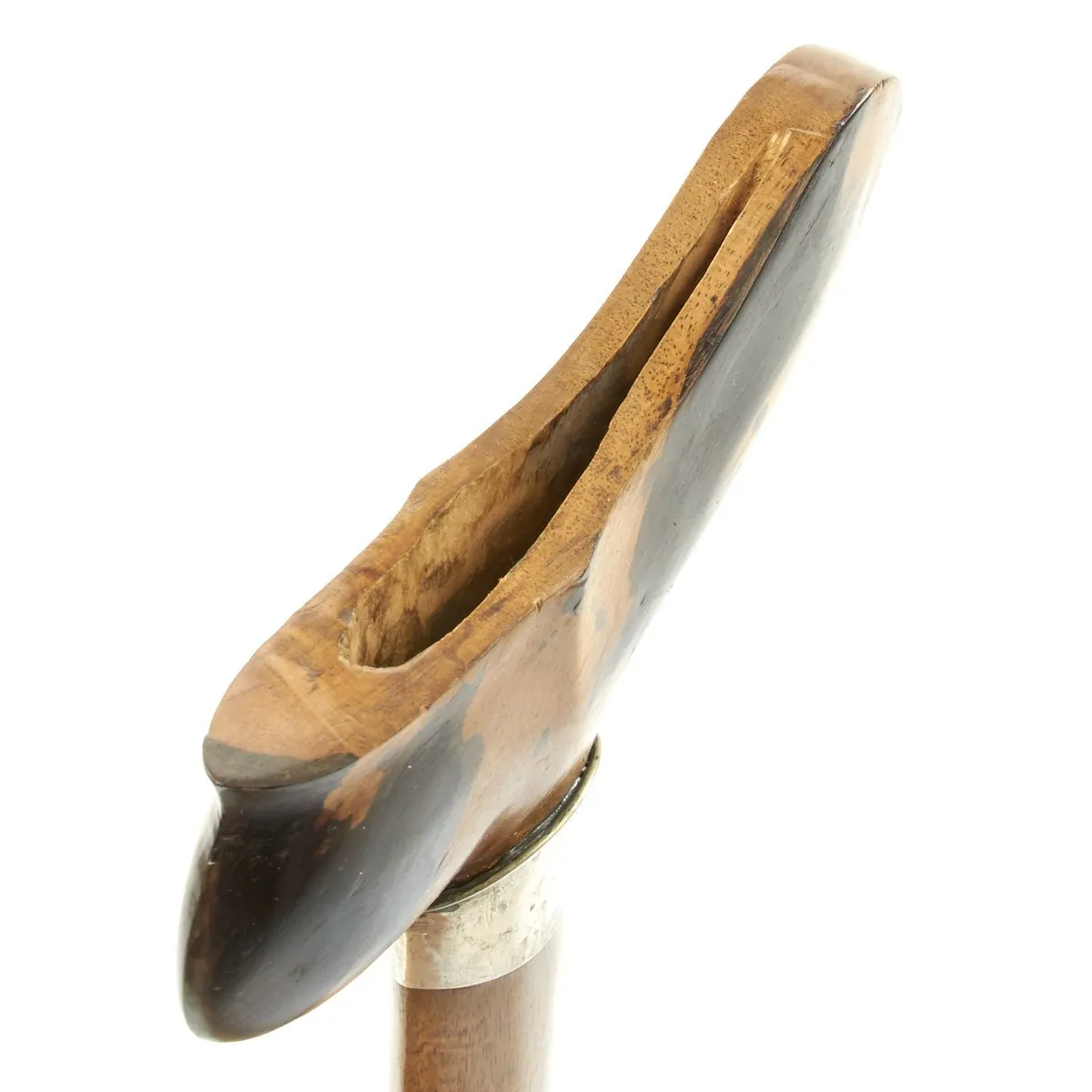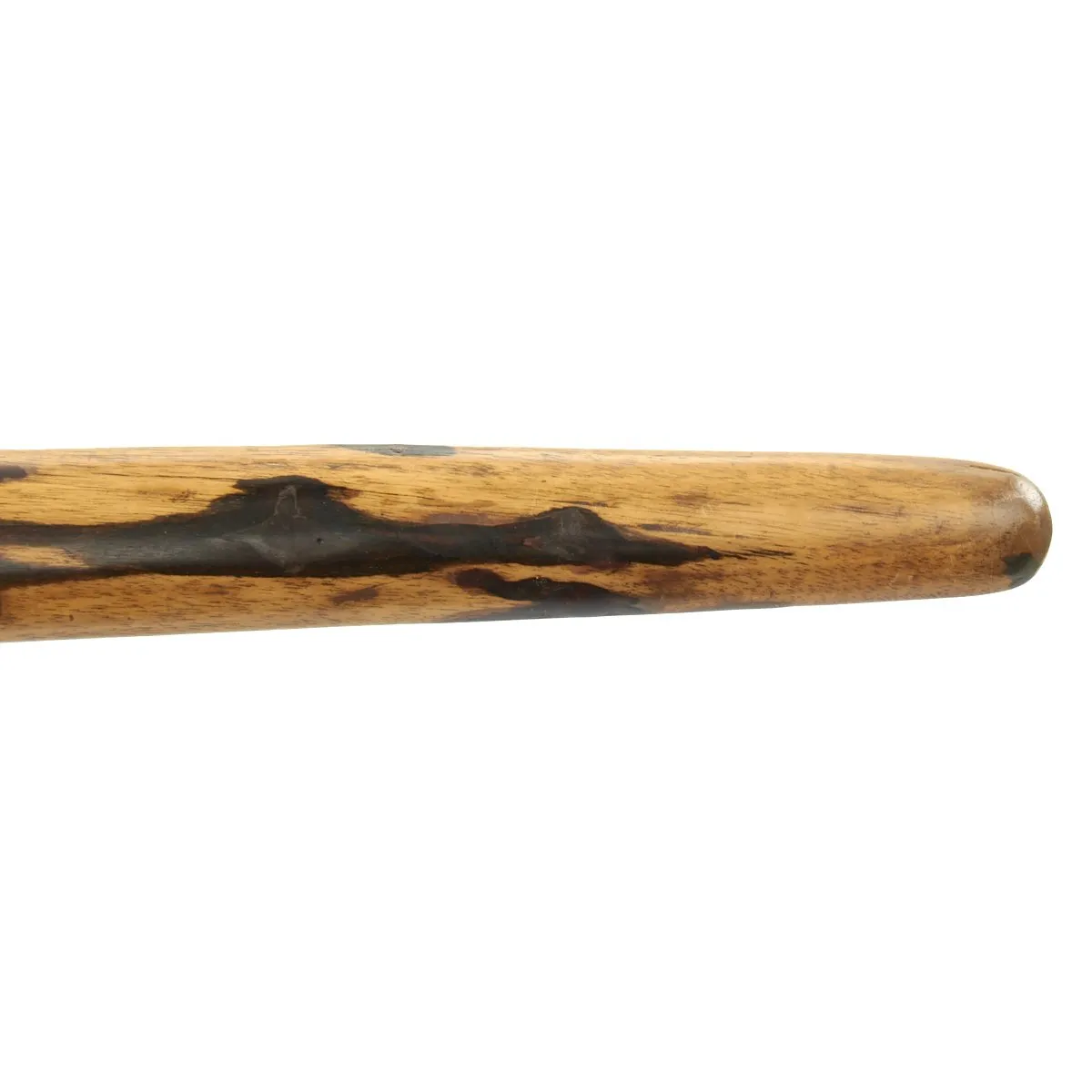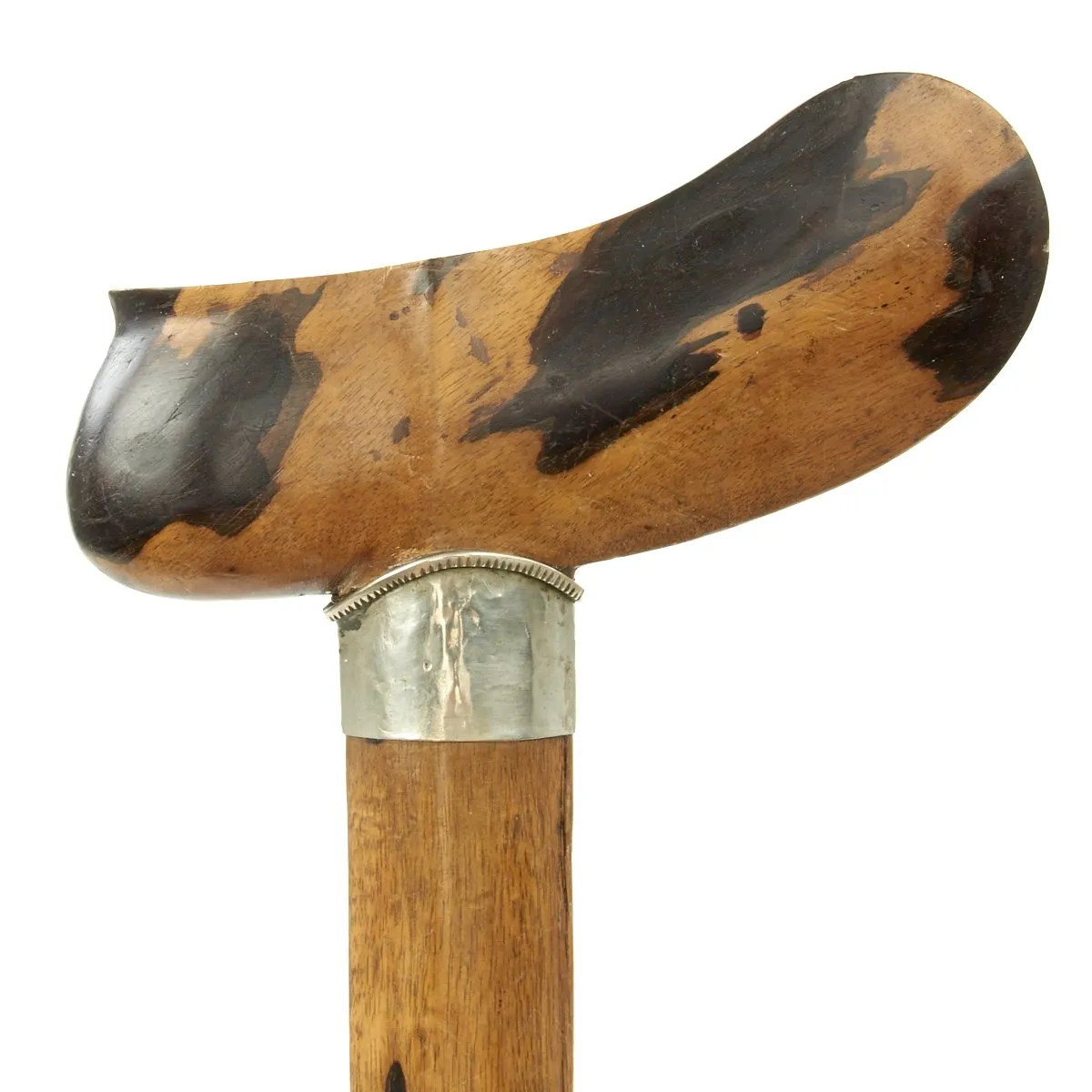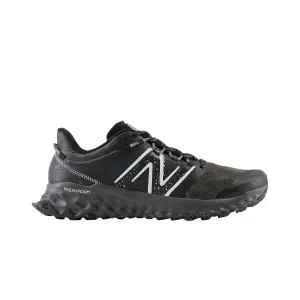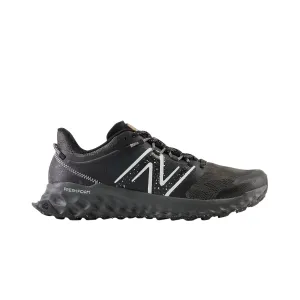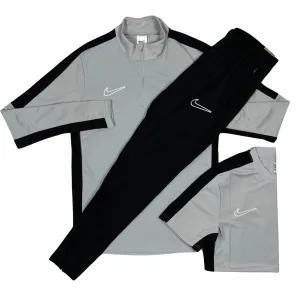Original Item: One Only. The kris or keris is a prized asymmetrical dagger most strongly associated with the culture of Indonesia, but also indigenous to Malaysia, Thailand, Brunei and Singapore. It is known as kalis in the southern Philippines. The kris is famous for its distinctive wavy blade.
A kris can be divided into three parts: bilah (blade), hulu (hilt), and warangka (sheath). These parts of the kris are objects of art, often carved in meticulous detail and made from various materials: metal, precious or rare types of wood, or gold or ivory. A kris's aesthetic value covers the dhapur (the form and design of the blade, with around 150 variants), the pamor (the pattern of metal alloy decoration on the blade, with around 60 variants), and tangguh referring to the age and origin of a kris.
Both a weapon and spiritual object, kris are often considered to have an essence or presence, considered to possess magical powers, with some blades possessing good luck and others possessing bad. Kris are used for display, as talismans with magical powers, weapons, a sanctified heirloom (pusaka), auxiliary equipment for court soldiers, an accessory for ceremonial dress, an indicator of social status, a symbol of heroism, etc. Legendary kris that possess supernatural power and extraordinary ability were mentioned in traditional folktales, such as those of Mpu Gandring, Taming Sari, and Setan Kober.
This example is not a modern tourist item, it is the real thing dating from the 19th century.
The key to identify the older blades is to be able to find the join at the hilt end of the blade as the horn was always added as a separate piece. Later examples and modern tourist pieces were always had blades made from just one sheet of steel. This example definitely has the separate hilt end of the blade, which is then brazed or welded on.
Each section of the Dutch East Indies produced the traditional Kris Daggers but each district, Java, Borneo, and others had their own characteristics. This area is today covered by what we know as Indonesia, Malaya and the Philippines.
The 12 3/4 inch blade on this example (17 1/8 inches overall) is made from high nickel content iron, often found in meteorite iron, giving a unique finish known as "pamor". The iron was crucible forged, much like wootz steel, giving it a lovely laminated appearance on the straight blade. Kris daggers with this shape blade are typical for the island of Java.
The blade is mounted in a figured wooden carved hilt, which has some relatively simple engravings, which seem to show faces. The rest of the handle, which is "J" shaped, is smooth and really highlights the figured grain. This grip also has a cup-shaped brass top fitting, ending in a filigreed brass ferrule where it meets the blade. It is inlaid with clear semi-precious stones.
This kris also comes complete with its original exotic wood scabbard (warangka), which is made of a lovely marbled wood, and the lower part (galar) has a silver or white metal fitting (pendoq) at the top, which has a ridged upper lip.
A wonderful example of a the legendary Kris dagger, ready to display!

 Cart(
Cart(